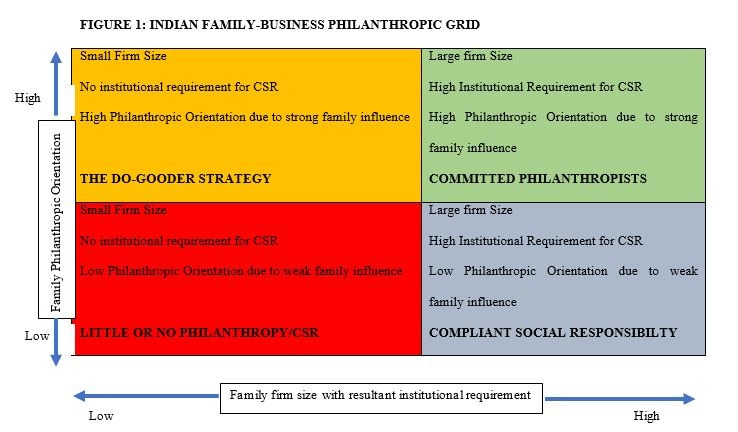To give or not to give: It's all in the family
The beneficiaries of philanthropy by family businesses are largely restricted to the local community, with business families acting as if they were stewards in their communities


 Image: Shutterstock[br]
Image: Shutterstock[br]
Business families have long been associated with philanthropy as a means of engaging with the community, with such traditions being part of Indian religious scriptures as well. Such philanthropy, though not explicitly stated, carried with it the expectations of a spill-over effect on both the business and the family side of the associated family businesses. On the business side, such philanthropy helped demonstrate the commitment of the family enterprise to long-term goals, besides developing the family social capital, while on the family side, it reaffirmed the family legacy among successive generations. However, the beneficiaries of such philanthropy were largely restricted to the local community, with business families acting as if they were stewards in their communities.
With the family name used for the family business, the distinction between the business family and the family business with regard to philanthropy got blurred. The company would be associated with strong family values, and this was the fulcrum around which the relationship of the family business with the society was based. Such relationship would manifest itself initially in the form of charitable trusts, libraries, gaushalas, health centres and primary schools in the native place of the founder patriarch. With time, it would expand in scope to the local community where the family business was located, encompassing townships for their employees, as seen in the case of Modinagar, Walchandnagar etc. In fact, little wonder then that the obituaries of some of the doyens of Indian industry representing ‘old blood’, say Keshab Mahindra or Ramkrishna Bajaj, might mourn the loss of ‘philanthropists’, rather than that of influential, astute businessmen.
Philanthropic Orientation and Firm Size
As family businesses transition from small and medium enterprises to large corporates, there may be factors in the external institutional environment, which may alter their business strategies regarding the extent and nature of philanthropy. Such factors pertain to domestic institutional ‘push’ factors in the form of legal requirements under the Companies Act 2013, which mandate large, profitable Indian companies to spend 2 per cent of their average Profit After Tax over the preceding three years on Corporate Social Responsibility (CSR) activities. At the same time, as India becomes integrated with the rest of the world, such companies would also look at integrating Western constructs of social responsibility and sustainability in order to be globally relevant and competitive, thereby altering the nature of philanthropic activities.
We distinguish between four types of Indian family businesses based on their philanthropic strategies. These may be seen as constituting philanthropic models in the Indian context.
Quadrant 1 comprises of small family firms, where low family influence may lead to little or no philanthropic orientation. In such cases, we may find little or no philanthropy or CSR. This may be the case for particular sectors such as the real estate sector in India, where the operational realities require the coming together of more than one family to carry on business. Family influence here is weak. Similarly, even if power is concentrated, but the family firm is a multi-generational small family-business which has survived more than two generations, and where the family and business values do not overlap, and where the commitment of successive generations to the family business is lower, we are likely to witness a dilution in the nature and extent of philanthropy.
Family Philanthropic Orientation may not exist in such cases, nor is it required by the law. The result is a strategy of Little or No Philanthropy. This does not, however, rule out charity by business families associated with such family firms. However, the former is distinct from Philanthropy in that it is more short-term in nature, sporadic and for a specific purpose .
Quadrant 2 comprises of firms which are small, and yet the family influence results in high philanthropic orientation. Such firms carry out significant philanthropic activity. There is high involvement with the community and the tradition of giving, although the firms may demonstrate small-firm orientation in their philanthropic/CSR strategies. Such small firm-orientation refers to the predilection for activities which may be backed either by religious sanctions/exhortations or may be driven by the values of the family, especially the founder. Women family members may be deeply involved with such philanthropic projects. These activities/projects may have little sync with business interests. These are do-gooder firms, where the intent may be stronger than the outcomes.
The 45-year-old family business, Sakthi Masala, located in Tamil Nadu, involved in the manufacturing and trading of numerous types of spices since 1975 is an example of such a firm. With their eldest daughter, Sakthi, having been born physically disabled, with difficulty in walking, it seems but natural that the family would carry out philanthropic activities in the area of improving the lives and providing livelihoods to the physically challenged. The group additionally also supports the mentally challenged. Women in the family drive the social responsibility initiatives.
Quadrant 3 comprises of family firms which are large, profitable companies and which have to follow legal norms for CSR, while the family influence may be weak resulting in low philanthropic orientation. In these firms, business interests supersede family interests, and such family firms may try to ensure mere compliance of CSR requirements. While the company would be legally compliant, such philanthropy/CSR is not likely to make deep impact, since it largely constitutes giving a cheque. We call these firms compliant firms. Such philanthropy may not be very strategic, as seen in the case of CSR activities of the Raymond Group, which includes a range of activities including, Animal Welfare, on preventive health care, hygiene and the social sector, Hunger Eradication, Promoting Health Care , Women Empowerment of women trafficked into brothel prostitution and Promoting education. The weak family influence may be seen as having spilt over into low philanthropic orientation, where a dispersal of funds across multiple activities is the outcome.
Quadrant 4 is the set of firms, the committed philanthropists, who are large family firms required to conform to legal norms, but also with high philanthropic orientation. Paradoxically, we may see a continued business-family centric philanthropic approach characterizing a family business’ social responsibility/sustainability strategies, even as business interests supersede family interests. Philanthropy in this case may be driven by the family, rather than the business side. Such firms do run the risk of a small-firm orientation creeping into the conceptualization and execution of their social responsibility strategies. However, with some support, they may be able to overcome this limitation, and lead to strong outcomes, backed by strong intent.
Take the case of a 69-year-old Indian family business- Sudarshan Chemicals, the largest pigment producer in India with a 35 per cent market share, and currently ranked number 4 globally. With a history of philanthropic activities, in 2010, the company drew up a CSR initiative called SUDHA, an acronym for Sudarshan’s Holistic Aspirations, with women empowerment, education and environment being the focus areas. Environment, in particular, was strategic now from the perspective of being a global player in the chemicals industry. However, the company continued to struggle with a small-firm orientation in its CSR activities, with SUDHA being handled by the women family members. After the passing of the Companies Act 2013, in line with the legal requirements, such activities in Sudarshan continue to be strongly championed by family members and centred around the traditions associated with the founders, however, now have in place a professional structure comprising of family members, as also non-family CSR professionals.
Thus, the tradition of giving itself may not be homogenous to all Indian family businesses. The heterogeneity of family businesses, in terms of ownership, experience and culture, together with the presence of institutional environmental requirements based on firm size may determine the nature and extent of philanthropy of Indian family businesses. When it comes to philanthropy and family businesses, we may then safely say: To Give or Not to Give: It’s all in the Family.
By Dr. Tulsi Jayakumar - Professor-Economics & Chairperson, Family Managed Business at Bhavan"s SPJIMR.
First Published: Jan 22, 2021, 09:27
Subscribe Now